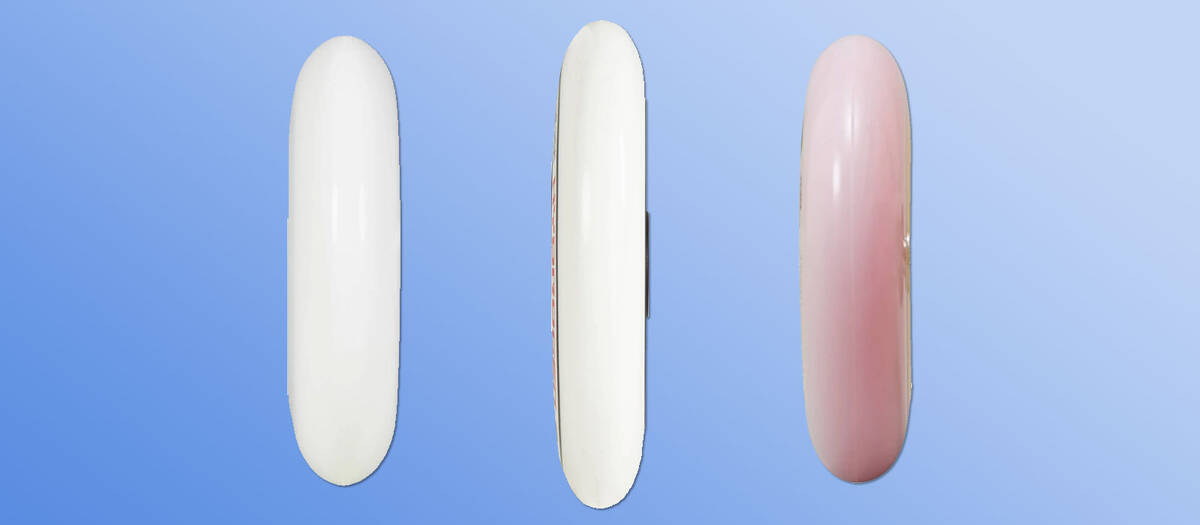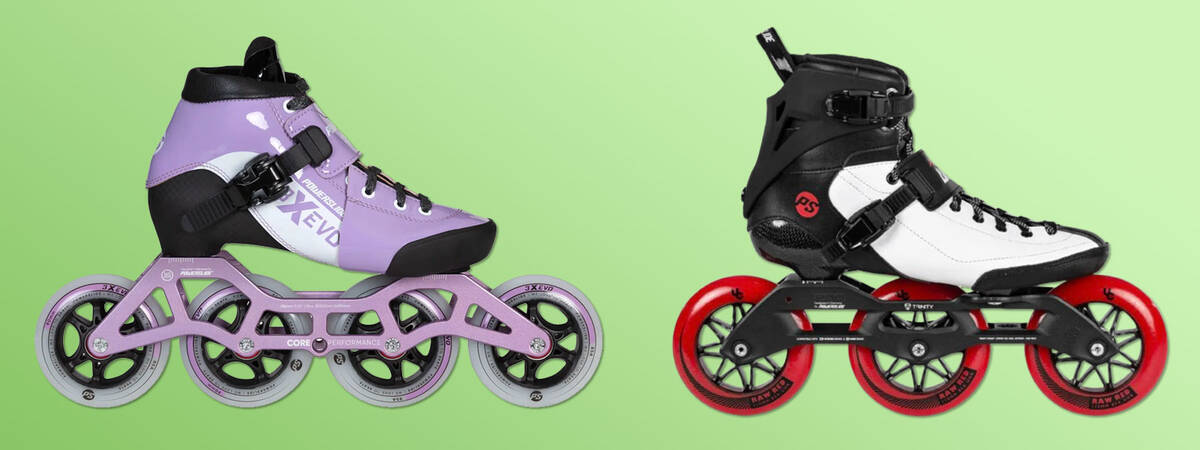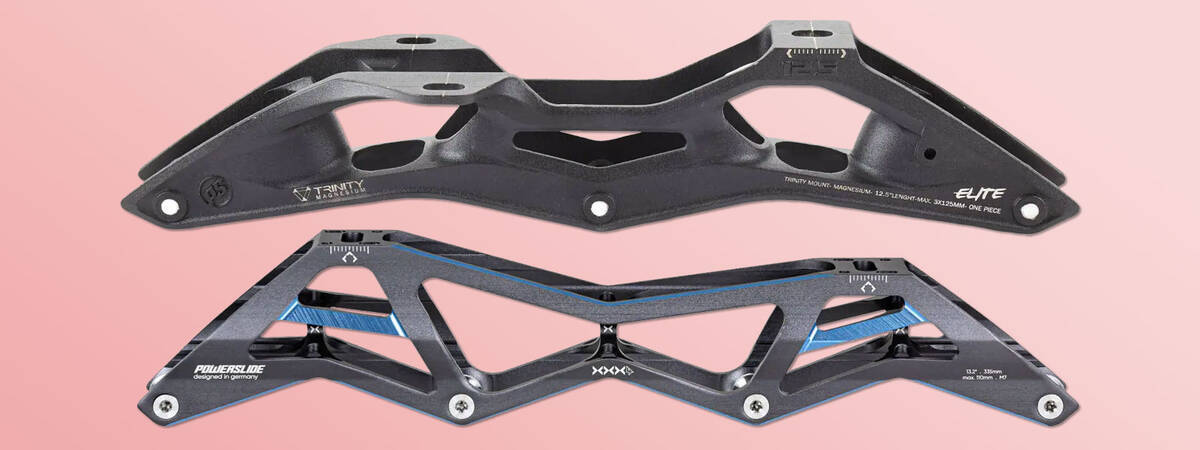Purchasing Speed Skates
Welcome to our guide on buying speed skates, focusing on wheel size, bearings, boots, and frames. The performance of speed skates is paramount, irrespective of whether you are a novice or experienced skater. This guide will educate you on what contributes to the rapid roll of speed skates.
Your choices will naturally align with the conditions you skate in and the style of speed skating you engage in. However, rest assured, we are here to illuminate any queries you might have about selecting speed skates.
Choosing Wheels for Speed Skates

For optimal speed, inline skates with larger wheels are essential. Let us delve into the fundamentals of wheels for speed skates. While wheel size and hardness are crucial, wheel hubs and profiles also significantly impact the performance of your speed skates.
The Appropriate Wheel Size for Speed Skating
Speed skating wheels are generally larger compared to those for leisure skating. Here are essential insights for selecting speed skate wheel sizes:
- 90 mm: Ideal for beginners and children due to the lower centre of gravity which offers easier control.
- 100 mm and 110 mm: Perfect for casual speed skaters and competitors, as they allow for faster speeds.
- 125 mm: Popular among marathon skaters aiming for maximum speed over long distances. These wheels are used on 3-wheel setups.
In theory (and often in practice), larger wheels provide greater speed. Beginners may lack the technique for 110 mm or 125 mm wheels and could actually be faster on smaller wheels. However, with the necessary skill to control them, higher speeds are achievable with larger wheels.
Conversely, smaller wheels allow for quicker acceleration. If sprinting short distances is your focus, steer clear of 125 mm wheels due to their sluggishness in reaching top speeds.
Note: 125 mm wheels are unsuitable for indoor or track races.
Understanding Wheel Hardness for Speed Skating
In speed skating, wheels are typically harder than those used in recreational or fitness inline skates. The increased hardness reduces friction with the surface, enhancing speed, although it results in less grip and vibration absorption.
Consider the wheel hardness of the speed skates you intend to purchase based on your skating conditions. Will you be on public roads, outdoor rinks, or indoor rinks?
- Harder wheels: Provide less grip, reduced vibration absorption, lower friction, and faster speeds.
- Softer wheels: Offer enhanced grip, greater vibration absorption, increased friction, and can still permit high speeds.
Harder wheels suit indoor rinks or very smooth surfaces. On rough and unpredictable roads, softer wheels are advisable.
The standard wheel hardness for speed skates is around 85 A on the durometer scale.
Wheel Profile in Speed Skating

Speed skating wheels generally feature a pointy or narrow profile, reducing contact with the surface and consequently friction, thus increasing speed.
As wheels wear down, their contact area increases, and the centre line moves sideways. This sideward shift during your stride is normal. Before it adversely affects your skating, we suggest rotating the wheels.
Wheel Count on Speed Skates

Inline speed skates typically feature either 3 or 4 wheels per skate. Although 5-wheel speed skates were once in vogue, the current norm is either 3 or 4 wheels.
- 3 wheels per skate: The shorter wheelbase enhances manoeuvrability and agility. Additionally, these skates can house larger wheels, requiring less physical exertion to sustain speed. However, due to their demand for more skill, they are not recommended for absolute beginners.
- 4 wheels per skate: With a longer wheelbase, these skates offer increased stability but reduced agility, making them suitable for beginners.
In competitive speed skating, 3-wheel setups with 125 mm wheels are predominantly used in marathons. Conversely, 4-wheel setups with 110 mm wheels are common in competitive indoor or specialised outdoor speed skating events.
Frames for Inline Speed Skates

The frames of inline speed skates secure the wheels and significantly affect your overall setup:
- 3-wheeled or 4-wheeled frame: Dictates the number of wheels your skates can accommodate.
- Wheelbase: The length between the front and rear wheel centres.
- Wheel diameter: The maximum wheel size that can be mounted on the frame.
Quality inline speed skate frames are lightweight, usually aluminium or carbon fibre.
- Carbon fibre frames are lighter and stiffer than aluminium frames, known for superior power transmission.
- Aluminium frames offer greater durability and are more forgiving compared to carbon frames.
Aligning Inline Speed Skate Frames
The alignment of speed skate frames is crucial for performance-focused skaters. It matters when upgrading frames and when purchasing complete speed skates. You might find a specific alignment more beneficial, or you may require a different alignment than what is initially provided.
Adjusting the frames aims to discover the optimal balance point according to your physiology. Should you struggle to keep your ankles straight (if your foot tilts inward), consider slight adjustments to the lateral frame position.
Aligning speed skate frames involves centring them on the boots, both laterally and longitudinally.
Lateral adjustment for speed skate frames:
- Ensure the front wheel aligns with the gap between your big toe and second toe.
- Align the rear wheel with the boot's heel cup centre.
Longitudinal adjustment for speed skate frames:
- Centre the boot in the frame, ensuring equal distance from boot tip to frame tip and from boot back to frame back.
Our full selection is available here:
Boots for Inline Speed Skates

Efficient power transfer is key in selecting inline speed skate boots, requiring a stiff, tight-fitting boot without excess room for movement.
Typically, speed skate boots lack liners. While liners add comfort, they may hinder direct power transfer, often omitted in professional speed skating. However, many speed-focused inline skates offer comfort features like heightened ankle support or liners, making them ideal for lengthy inline marathons.
Heat-Mouldable Speed Skate Boots
Numerous advanced speed skates feature heat-mouldable boots, allowing them to conform to your foot shape when heated. Heat-moulding can alleviate pressure points, discomfort, and blisters by customising the boot's fit to your foot. A well-moulded boot enhances control and power transfer, particularly advantageous for the performance-driven speed skater.
Follow the manufacturer's instructions for your specific model when moulding your boots.
Bearings for Speed Skates
It is prudent to consider bearings when acquiring speed skates, although the bearings installed should not solely determine your choice. Typically, quality speed skates come equipped with quality bearings.
Bearings often use the ABEC scale, where a higher rating signifies more precise manufacturing. Though the rating doesn't directly indicate speed, it reflects construction tolerance. Lower-rated ABEC bearings might not offer as smooth a ride as higher-rated ones.
You might encounter ILQ-rated bearings, standing for InLine Qualified. These are high-quality bearings and perform excellently!
When selecting bearings for speed skating, prioritise brand recommendations and user feedback rather than specifications. Many experienced skaters suggest focusing on the durability of bearings over ABEC ratings.
Maintenance and lubrication are critical for speed skate bearings (and other roller sports). Regular cleaning and lubrication prolong the lifespan of your bearings. If neglected, you may need replacements sooner.
